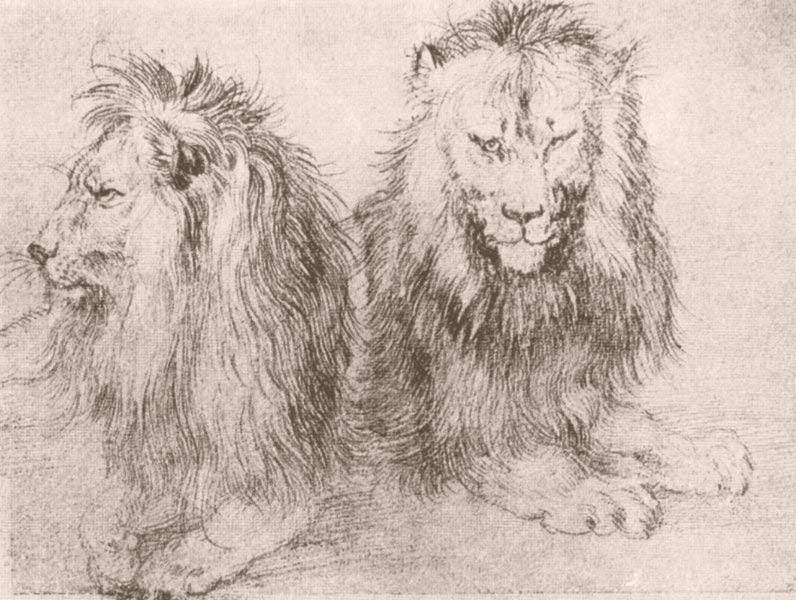
Learning to control your line work is crucial in learning to draw well. One way to tame the lines in your drawings is to take time to read the line work done by great masters. In studying the confident strokes by legendary virtuosos—from ancient cave artists, to Albrecht Durer (shown above), to Eugene Delacroix—you’ll become a skilled observer of life and dramatically improve your drawing.
Following is the shortlist of my heroes who have laid down some of the greatest lines ever drawn in history. I encourage you to be diligent in studying these Great Lions of Drawing. Let’s dive in!
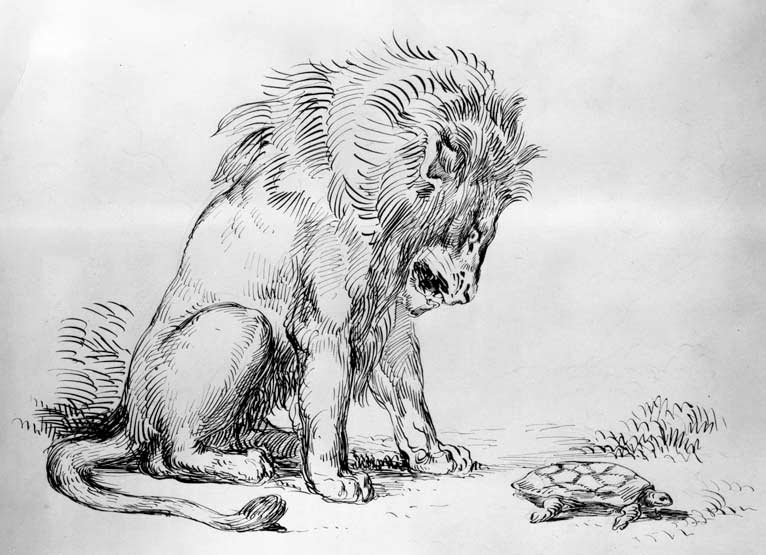
Master drawers simply have a knack for placing all the right lines in all the right places, as shown above in Delacroix’s lion and turtle sketch. Of course, to achieve this level of skill, the masters practiced drawing and painting most of their waking moments in life.
At first glance you’ll notice the wizardry of each master’s techniques, such as harsh strokes transitioning to delicate curves, or chaotic scratches blending to rhythmic patterns. Looking closer, you’ll begin to see their different strategies in unifying lines into shapes; then modeling shapes into convincing, realistic form.
Adept line work illuminates their keen awareness of artistic anatomy and how the masters, as Robert Beverly Hale wrote, “absorbed the technical knowledge which should be expected of any competent artist.”
Chauvet (30,000-40,000 years B.C.)
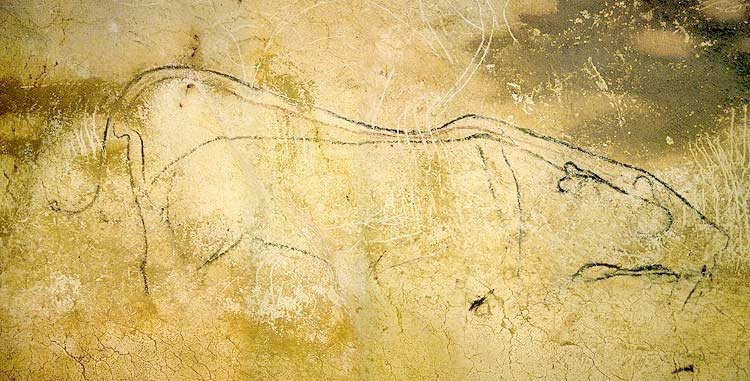
In a style that appears to have been created just last week, this Paleolithic drawing shows how masterfully drawn contour lines can depict realistic form. Even after 300 centuries, these nuzzling lions symbolize our enduring desire for using lines to record the world around us. This astonishing Chauvet Cave drawing is featured in The Cave of Forgotten Dreams.
Albrecht Durer (c.1471-1528)
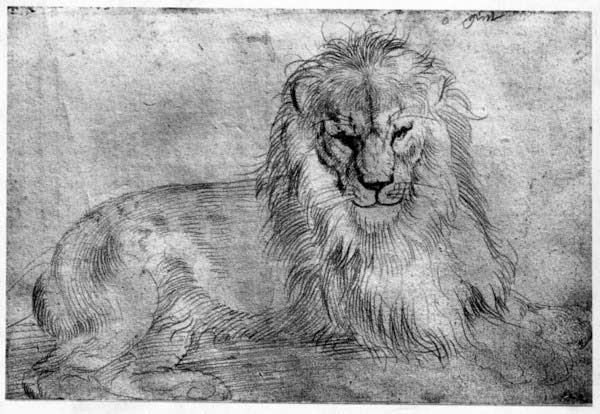
German engraver and painter, Albrecht Durer was a preeminent line meister. He handled the seemingly impossible task of depicting the lion’s mane by suggesting its furry mass with sparse flourishes of curved lines. Durer was a pioneer in using extensive line work to depict 3D form, as shown in his confident delineation of textured fur covering muscles.
Leonardo da Vinci (1452-1519)
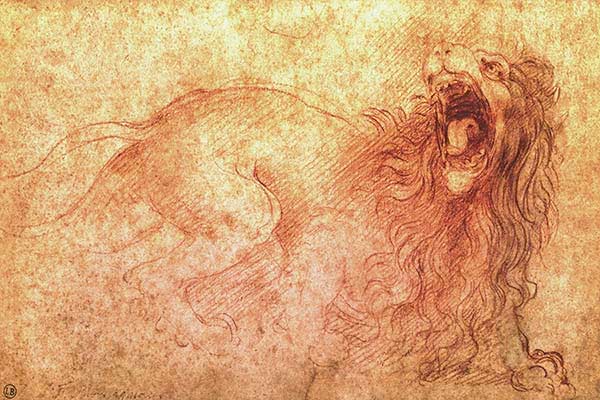
Being the Renaissance man that he was, Leonardo da Vinci’s inventive genius and extensive knowledge of anatomy is made visible in this iconic study sketch. Rapidly drawn patterns of angled lines and dauntless, flowing contour lines emphasize the lion’s mane and movement of the jaw.
Sir Peter Paul Rubens (1577-1640)
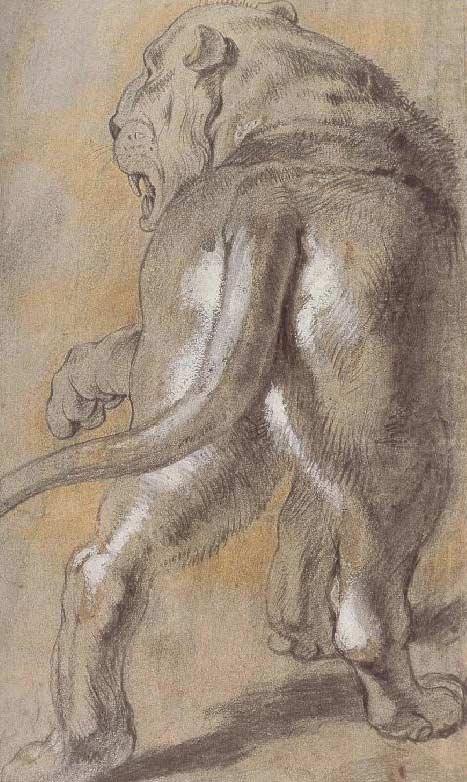
The rage during the Flemish Baroque era was an extravagant painting style that emphasized movement and sensuality. This preparatory drawing for Daniel in the Lion’s Den showcases Sir Peter Paul Rubens‘ expertise in modelling muscle mass and textures that distinguished him as the consummate draftsman.
Rembrandt van Rijn (1607-1669)
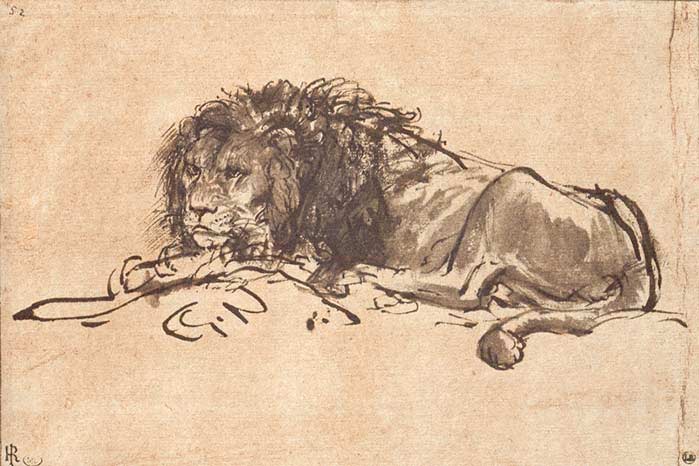
The dutch painter, Rembrandt van Rijn, was adroit with all drawing media. These ink studies show his mastery of rapid line work. Rembrandt’s brilliance is not so much what he shows us, but what he doesn’t show. Meandering, broken lines suggest the clumpy masses of the lion’s mane overlaying smooth fur and muscles.
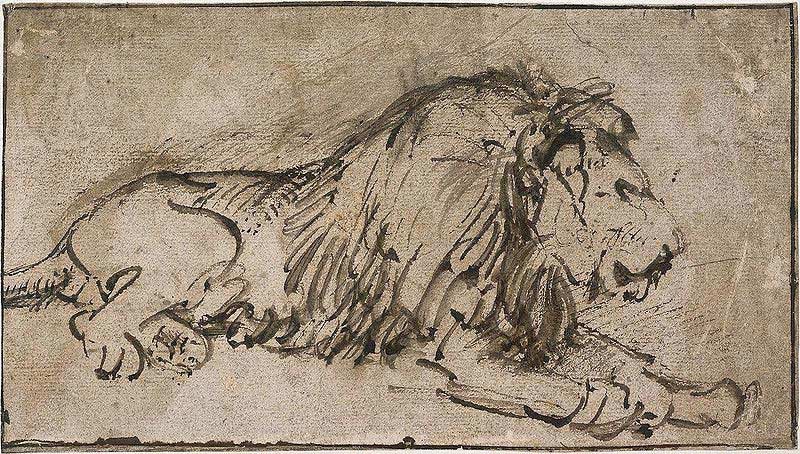
Rembrandt excelled in quickly recording the essence of form. We sense the urgency in the turn of his wrist as he moves from sweeping lines for the texture of hair to his calculated strokes defining the structure of a powerful jaw. In the book, Animal Sketching, Alexander Calder states, “If a cat is asleep, make it completely, luxuriously asleep, the belly supported by the floor, legs limp, muscles sagging. If it is alertly awake, get the attitude; all the muscles tense, ears erect, eyes observant, tail poised to give the best balance for a sudden spring.”
Eugene Delacroix (1798-1863)
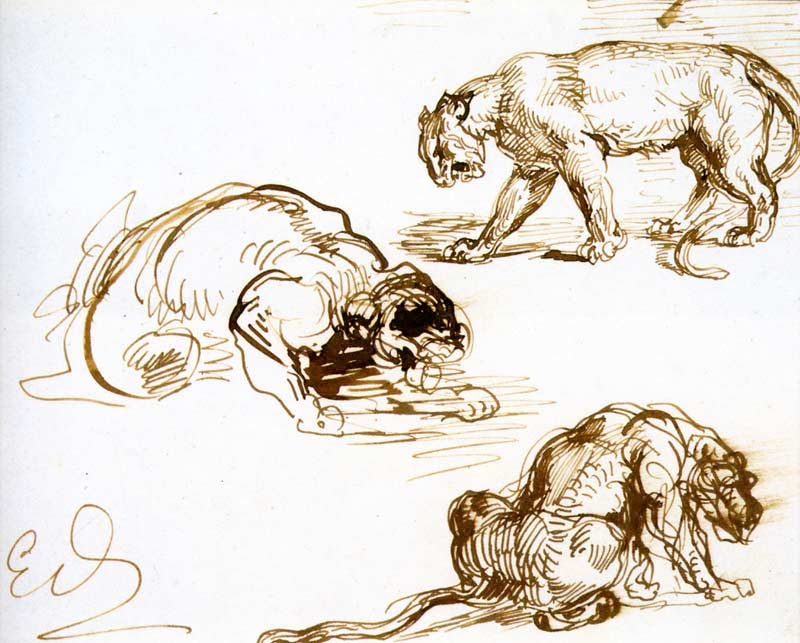
Ferdinand Victor Eugène Delacroix, acclaimed leader of the French Romantic school of painters, busted the sketching process open for all of us! His preoccupation with capturing tension, movement, and distribution of weight influenced generations of sketchers. It’s easy to see the fierce attention and speed of his drawing hand in his lion gesture studies.
In studying drawings by the masters, we begin to understand what is needed to become accomplished sketchers: impassioned spirit, an alert eye, nimble wrist, lightning-quick hand, and impeccable line work—all foundational attributes that Great Lions of Drawing all share in common.
Related Posts: Cave of Forgotten Dreams Animal Sketching
Rob Court
Latest posts by Rob Court (see all)
- Drawing With Friends - April 11, 2022
- Frozen in Time: Cellphone Users as Models to Draw - April 8, 2022
- Getting Out & Getting Real - June 20, 2021
- Life Lines: Sketching the Unseen World of Movement - June 20, 2021
- The Ups & Downs of Urban Sketching - May 9, 2021